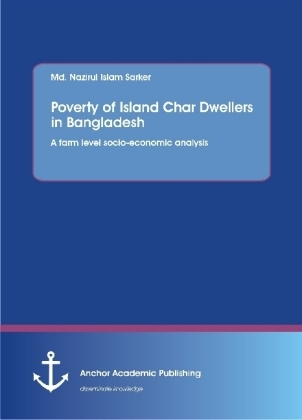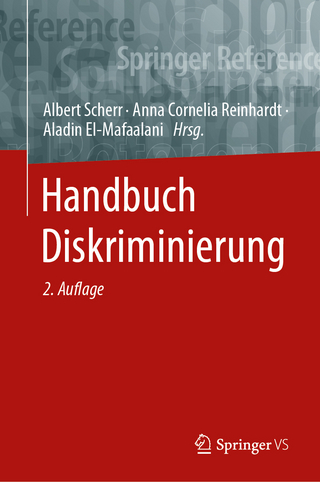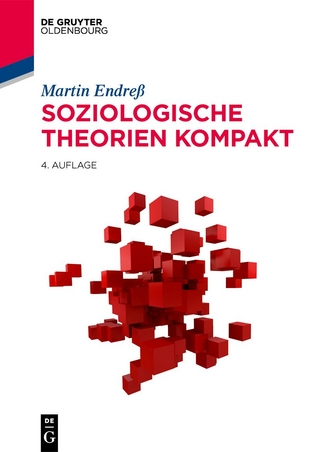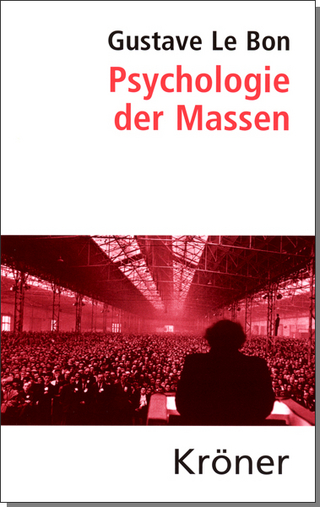
Poverty of Island Char Dwellers in Bangladesh. A farm level socio-economic analysis
Anchor Academic Publishing (Verlag)
978-3-96067-040-7 (ISBN)
Md. Nazirul Islam Sarker is currently working as a Deputy Manager of a private commercial Bank in Bangladesh. Previously, he was a program officer at the Chars Livelihoods Program funded by DFID, UK. In 2005 and 2007 he completed his B.Sc.Ag (hons) and MS in Agricultural Extension Education from Bangladesh Agricultural University achieving First class and CGPA 3.906 out of 4.0 respectively. Subsequently, he completed his Commonwealth Executive MBA which was offered jointly by Commonwealth of Learning and Bangladesh Open University. The author completed the Diplomaed Associate of Institute of Bankers' Bangladesh (DAIBB) from Institute of Bankers Bangladesh and Diploma in Islamic Banking from Islami Banking Training and Research Academy (IBTRA), Bangladesh. He has published nine scientific articles in various reputed national and international journals.
'Text sample:
Chapter 4.3.1 Relationships between age with poverty alleviation:
The observed correlation co-efficient between age of the respondents and their change in food availability, sources of drinking water, physical assets, sanitation and increasing scope of income were found to be 0.161, -0.235, -0.020, 0.172 and -0.202 respectively (Table 4.7). This led to the following observations regarding the relationships between age and their poverty alleviation.
A) The relationships between age and their change in food availability showed a positive trend, the strength of relationship between the variables was very low, the computed value of 'r' (0.161) was smaller than table value (r = 0.1946) with 100 degrees of freedom at 0.05 level of probability. Therefore, the null hypothesis could not be rejected. Thus, the researcher concluded that age of the respondents was not related to their change in food availability. This tends to suggest that poverty alleviation programme would have the possibility of reception by all the client systems irrespective of whether they are young, middle aged or old.
B) The relationships between age and their change in sources of drinking water showed a negative trend, the strength of relationship between the variables was low, the computed value of 'r' (-0.235) was greater than table value (r = 0.1946) with 100 degrees of freedom at 0.05 level of probability. Therefore, the null hypothesis was rejected. Thus, the researcher concluded that age of the respondents had a negative significant relationship with their change in sources of drinking water. This implies that due to increasing age, they became unable to buy tubewell.
C) The relationships between age and their change in physical assets showed a negative trend, the strength of relationship between the variables was very low, the computed value of 'r' (-0.020) was smaller than table value (r = 0.1946) with 100 degrees of freedom at 0.05 level of probability. Therefore, the null hypothesis could not be rejected. Thus, the researcher concluded that age of the respondents was not related to their change in physical assets.
D) The relationships between age and their change in sanitation showed a positive trend, the strength of relationship between the variables was very low, the computed value of 'r' (0.173) was smaller than table value (r = 0.1946) with 100 degrees of freedom at 0.05 level of probability. Therefore, the null hypothesis could not be rejected. Thus, the researcher concluded that age of the respondents was not related to their change in sanitation.
E) The observed correlation coefficient between age and their change in income showed a negative trend, the strength of relationship between the variables was low, the computed value of 'r' (-0.202) was greater than table value (r = 0.1946) with 100 degrees of freedom at 0.05 level of probability. Therefore, the null hypothesis was rejected. Thus, the researcher concluded that age of the respondents had a significant negative relationship with their change in income. This implies that the income of the respondents decreased due to increasing age. Ali (2003) and Islam (2001) also found similar result in their studies.
4.3.2 Relationships between education and poverty alleviation:
The computed correlation co-efficient between education of the respondents and their change in food availability, sources of drinking water, physical assets, sanitation and increasing scope of income were found to be -0.033, 0.218, 0.162, - 0.008 and 0.235 respectively (Table 4.7). This led to the following observations regarding the relationships between education and their poverty alleviation.
A) The relationships between education and their change in food availability showed a negative trend, the strength of relationship between the variables was very low, the computed value of 'r' (-0.033) was smaller than table va
| Erscheinungsdatum | 29.08.2016 |
|---|---|
| Sprache | englisch |
| Maße | 155 x 220 mm |
| Gewicht | 152 g |
| Themenwelt | Sozialwissenschaften ► Soziologie ► Allgemeine Soziologie |
| Sozialwissenschaften ► Soziologie ► Spezielle Soziologien | |
| Schlagworte | Chars Livelyhoods Programme • Gaibandha • Haldia • International Development • Poverty Alleviation • Poverty Reduction Strategy • rural people • SAARC • Shaghata Upazila |
| ISBN-10 | 3-96067-040-0 / 3960670400 |
| ISBN-13 | 978-3-96067-040-7 / 9783960670407 |
| Zustand | Neuware |
| Haben Sie eine Frage zum Produkt? |
aus dem Bereich


